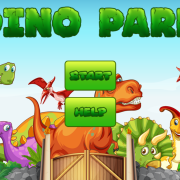Symbiotic Relationships | Game Online
Unraveling the Web of Life: Understanding Symbiotic Relationships in Nature
In the grand tapestry of life, interwoven are relationships so intricate and profound that they define the very essence of existence. These symbiotic relationships, a harmonious blend of mutualism, parasitism, and commensalism, form the fundamental backbone of biodiversity. Let's delve into this fascinating world and decode the intricacies of these three key players.
The Harmonious Dance: Mutualism
Mutualism, a dance of give-and-take, is arguably the most celebrated symbiotic relationship in nature. It's where two species thrive due to their interaction, each offering a unique benefit to the other. A classic example can be found in the relationship between bees and flowers. Bees pollinate flowers, enabling them to reproduce, while they gather nectar for food. Both parties reap rewards, ensuring their survival and propagation.
The Parasitic Pursuit: Parasitism
Contrasting mutualism is parasitism, a one-sided relationship where one organism (the parasite) derives benefit at the expense of another (the host). Unlike mutualism, there's no mutual gain; instead, the parasite exploits the host for resources. Take, for instance, the malaria parasite infecting human hosts. While humans suffer, the parasite multiplies and spreads. This relationship is detrimental to the host but beneficial to the parasite, hence the term 'parasitism.'
A Subtler Interaction: Commensalism
Commensalism is a less intense symbiotic relationship, where one organism benefits while the other remains unaffected. Imagine barnacles hitching a ride on a whale. The barnacle gains a habitat and food supply, but the whale experiences neither harm nor benefit. This interaction is termed 'commensalism.'
Symbiotic Relationships: A Cornerstone of Biodiversity
These relationships aren't merely fascinating curiosities; they are cornerstones supporting the intricate web of life. They enable species to coexist, fostering biodiversity and maintaining ecosystem health. Understanding these dynamics helps us appreciate the delicate balance inherent in our natural world.
The Consequences of Disruption
The disruption of symbiotic relationships can have far-reaching consequences, as seen in the decline of bee populations due to pesticide use and habitat loss. When these crucial players disappear, entire ecosystems teeter on the brink of collapse. Preserving these relationships is paramount for maintaining a thriving planet.
Nature's Intricate Dance: A Call to Action
As we unravel the complexities of symbiotic relationships, we are reminded of our role in this grand tapestry. By understanding and respecting these interactions, we can contribute to a healthier planet. From planting bee-friendly gardens to advocating for sustainable practices, each action counts. Join us in celebrating nature's intricate dance, and together, let's ensure its harmonious continuation.
In the grand tapestry of life, symbiotic relationships serve as the threads that bind species together. Whether mutualistic, parasitic, or commensalistic, these interactions define our world and underscore the delicate balance required for survival and coexistence. Let us cherish and protect these bonds, for they are the very foundation of biodiversity and the health of our planet.










